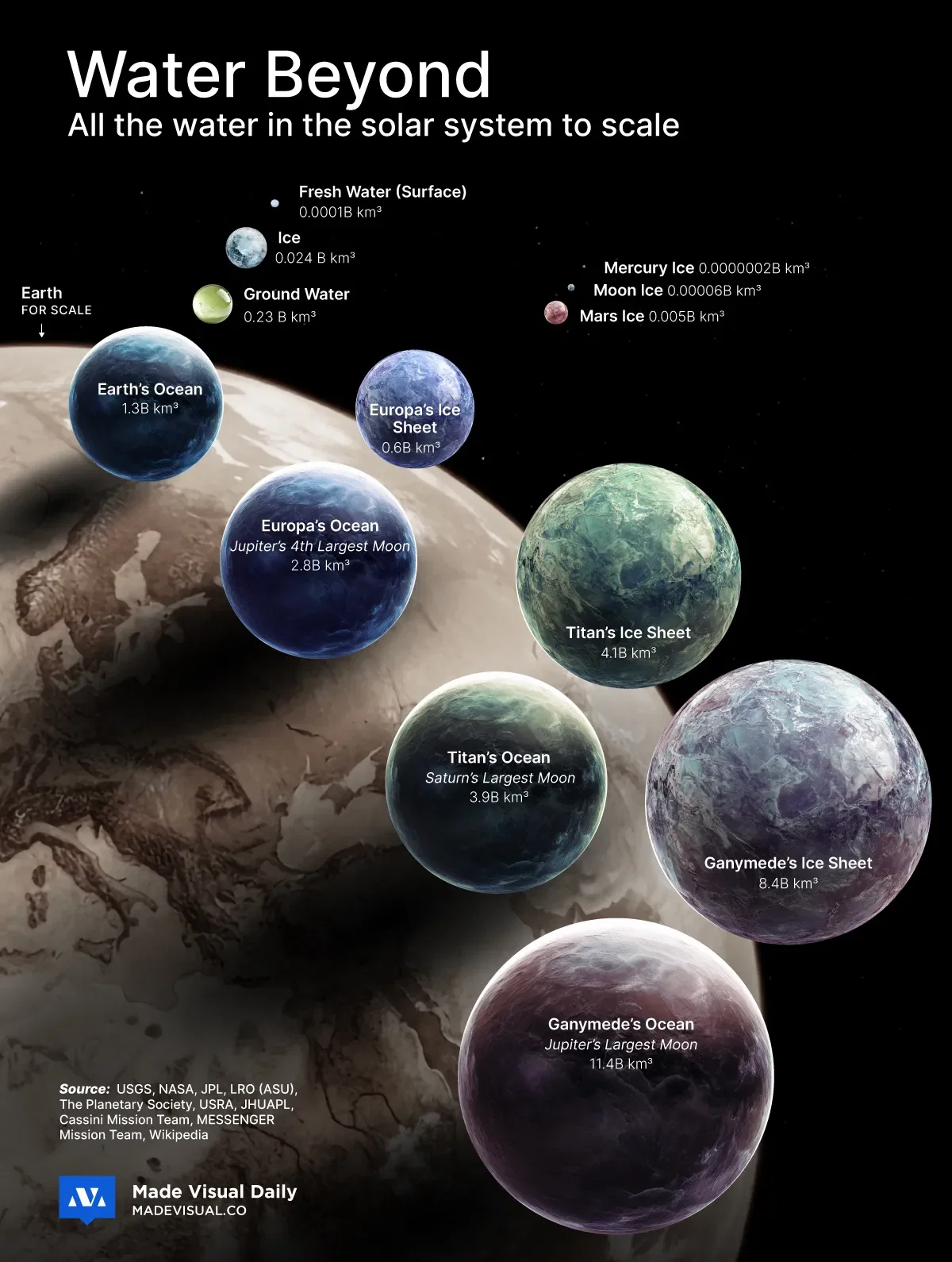The Largest Bodies of Water in the Solar System: Visualized

Water in all its forms is far more abundant beyond Earth than most people realize, with several moons holding oceans and ice reserves that dwarf our planet’s supply.
Takeaways:
- Bodies like Titan and Ganymede hide multi-layered oceans sealed beneath thick pressure-formed ice, a structure so unlike Earth that ordinary intuition fails to grasp how vast these reservoirs are.
- The Moon and Mercury, often assumed barren, actually preserve pockets of frozen material in permanent shadows—minuscule compared to planetary reserves, but astonishing given their exposure to relentless solar radiation.
Data
These volumes were derived by converting published mass or depth estimates into cubic kilometers, then translating those into equivalent sphere sizes using a standard geometric formula. Earth data came from the USGS water inventory, while the outer-planet figures were based on NASA, JPL, Cassini, Galileo, SHARAD, and MESSENGER measurements that constrain ice-shell thicknesses and ocean depths. For small bodies, we used radar returns and thermal models to bound the tiny amounts of frozen material in permanent shadow.
5 Related Facts:
🌊 Europa’s ocean may contain twice as much liquid water as all of Earth’s oceans combined, despite being smaller than our Moon.
🧊 Ganymede’s interior likely stacks alternating layers of liquid and high-pressure ice, creating a “water world lasagna” hundreds of kilometers deep.
🌑 The Moon’s polar cold traps can plunge below –230°C, cold enough to preserve flecks of ice for billions of years without sunlight ever touching them.
🛰️ Cassini detected subtle variations in Titan’s rotation that only make sense if a global ocean is sloshing beneath the crust.
☄️ Mercury’s ice is thought to be delivered and replenished by comets and micrometeorites, surviving only in permanently shadowed craters near the poles.